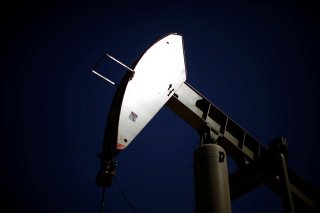IEA Report: Gasoline Demand Likely Peaked in 2019
While oil demand is beginning to rise again after hitting major lows last year during the early days of the coronavirus pandemic, oil may hit its peak in a few years- and demand for gasoline specifically may have hit its peak in 2019.
While oil demand is beginning to rise again after hitting major lows last year during the early days of the coronavirus pandemic, oil may hit its peak in a few years- and demand for gasoline specifically may have hit its peak in 2019.
That’s according to a report issued Wednesday by the International Energy Agency.
“The Covid-19 crisis caused a historic decline in global oil demand – but not necessarily a lasting one. Achieving an orderly transition away from oil is essential to meet climate goals, but it will require major policy changes from governments as well as accelerated behavioural changes. Without that, global oil demand is set to increase every year between now and 2026,” Dr Fatih Birol, the IEA’s Executive Director, said in the release.
“For the world’s oil demand to peak anytime soon, significant action is needed immediately to improve fuel efficiency standards, boost electric vehicle sales and curb oil use in the power sector.”
As for gasoline, demand “may have peaked,” the report said, “as efficiency gains and the shift to electric vehicles offset mobility growth in emerging and developing economies.”
"We do not think gasoline consumption will come back to 2019 levels again," Birol told the Wall Street Journal this week.
The reason for that, in part, is the massive move by major auto manufacturers in multiple countries towards moving entirely towards electric cars. General Motors has announced that it is phasing out gas-powered cars by 2035, and Volvo by 2030.
The agency, per the Journal, forecasts that there will be 60 million electric vehicles on the road by 2026, compared to just 7.2 million in 2019.
In addition to that, the remaining gas-powered cars will be more fuel-efficient, further reducing gasoline demand.
“On the supply side, the heightened uncertainty over the outlook has created a dilemma for producers. Investment decisions made today could either bring on too much capacity that is left unused or too little oil to meet demand,” the IEA report said. “Only a marginal rise in global upstream investment is expected this year after operators spent one-third less in 2020 than planned at the start of the year.”
The start of the pandemic last year caused demand for both oil and gas to crash in the spring, with the average price of gas falling below $2 per gallon in March and April of 2020. It even led to a bizarre episode in May where a key futures contract for oil actually went negative.
But in the first months of 2021, gas prices have begun to creep upward again, for a variety of reasons that range from the energy crisis in Texas to rising demand due to the receding of the pandemic.
“Prices dropped as demand dropped amid the pandemic shutdown,” Politifact wrote this week about claims that the Biden Administration was to blame for the rising prices. "But with the COVID-19 picture improving and people moving around more, increased demand is pushing prices up as well.”
Stephen Silver, a technology writer for The National Interest, is a journalist, essayist and film critic, who is also a contributor to The Philadelphia Inquirer, Philly Voice, Philadelphia Weekly, the Jewish Telegraphic Agency, Living Life Fearless, Backstage magazine, Broad Street Review and Splice Today. The co-founder of the Philadelphia Film Critics Circle, Stephen lives in suburban Philadelphia with his wife and two sons. Follow him on Twitter at @StephenSilver.

